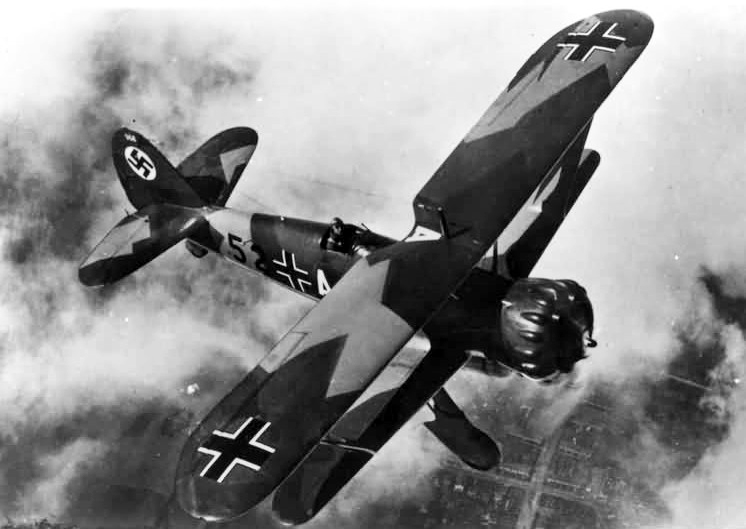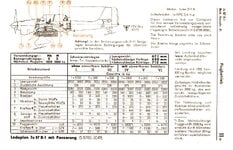- Thread starter
- #21
wiking85
Staff Sergeant
Not sure if you're just trolling or just not understanding what I'm saying. Clearly in WW2 there were not such things as attack helicopters, even though there were experiments with them dropping bombs and mounting MGs on them. I said as attack helicopter equivalents in the post-Korea sense, though perhaps in the parlance of the time I should have said as 'ground attack aircraft' as CAS was known at the time, though this misses the sense that I mean it. I meant for it to be used in the way modern attack helicopters are, as integral to the divisions or corps they support rather than as separate air force air support.There is a serious degree of memory telescoping going on here. Helicopters were not perceived as ground attack aircraft, certainly not in 1939 through to 1942, which then brings us to the fact that between the end of production of this aircraft and when a potential need for a cheap, affordable low maintenance attack aircraft is actually required, a lot happens that renders the Hs 123 obsolete.
Not sure why you think the requirements for a cheap, affordable, low maintenance attack aircraft rendered the HS123 obsolete given that history showed the exact opposite. The reason the Luftwaffe cancelled it was because they wanted a more complex, longer range, more 'modern' DIVE BOMBER. The Ju87
So not a cheap, affordable, low maintenance attack aircraft, just a more complex, longer range DIVE BOMBER. It wasn't really available in numbers by the time that the Hs123 was taken out of production. There were only about 300 available for the invasion of Barbarossa. Only about 360 had been built by September 1st 1939. Again it was designed to be a superior dive bomber, which is the opposite of a CAS aircraft and quite a bit more expensive than the Hs123. After all the Luftwaffe repeatedly requested for it to be put back into production, again as late as 1944, so clearly the Ju87 was not able to do what the Hs123 was. Sure the Bf109 and 110 were used as fighter-bombers, but they were much more expensive and competed with the Ju87 in their roles. Clearly you're unable to maintain logical consistency in your posting as what you're writing here contrasts with the previous section AND also at odds with the historical role the HS123 played.Firstly, the Ju 87. It is superior to the Hs 123 simply because it has two crew, radio, better radius of action, heavier bomb load and is available in numbers. Sure, it is a dive bomber, but it is a more versatile airframe; the Hs 123 is far too lacking in capability. Not only that Bf 109s and Bf 110s were used as jabos during the Battle of Britain and in North Africa and the Med, and they were designed as fighters, the Bf 110 a multi-role aircraft.
Again you're clearly missing the entire point of this thread, as the BoB was about operational and strategic air operations, not close air support for the army. The HS123 was used for army support, not independent air operations. The Ju87 was found to also not be suitable for that, but still was used until the end of the war for tactical bombing in support of the army. So you're either trolling or just completely disengaged from this discussion.Bear in mind that during the Battle of Britain the Ju 87's low performance in a enemy fighter heavy environment led to such high losses to the extent that the LW decided to withdraw it from the theatre. It is worth noting that the Hs 123 was not employed during the Battle of Britain because of its low performance, which provides another good reason not to keep it in production. The arrival of the Ju 87D is another reason why the Hs 123 is not necessary.
You clearly are unaware that the Hs123 was used until 1944 when it had to be withdrawn due to lack of spare parts. A bunch of aircraft were shoehorned into tactical bombing roles, but they still built the purpose designed CAS aircraft the HS129 and employed them in the hundreds. All I'm saying is that they already had a perfect aircraft for that role ready in 1936 and as a POD they recognize that and instead focus on making the 123 instead of the 129 and not force a bunch of fighters into the CAS role that it was unsuited for (the Bf109 was not a great fighter-bomber). The Ju87 was highly specialized aircraft that was also shoehorned into other roles, including direct ground attack where despite claims it did not excel.The Germans had aircraft that were fulfilling the ground attack/CAS role in the Bf 110, Ju 87 and the Bf 109, followed by the Fw 190F and Gs, all of which were better uses of production materials as alternatives to keeping the Hs 123 in production. If I can remember, other types, such as the Fw 189 and Bu 181 were employed as low rent strike airtcraft, which certainly the Hs 123 could have been used for, but to keep it into production for that long, when the need for these aircraft arose is just a waste of resources.
I hope you do realize that the Hs123 was used from 1939-44 as a ground attack aircraft, was very successful in that role, the luftwaffe repeatedly asked for more, and was never considered a waste of resources:






